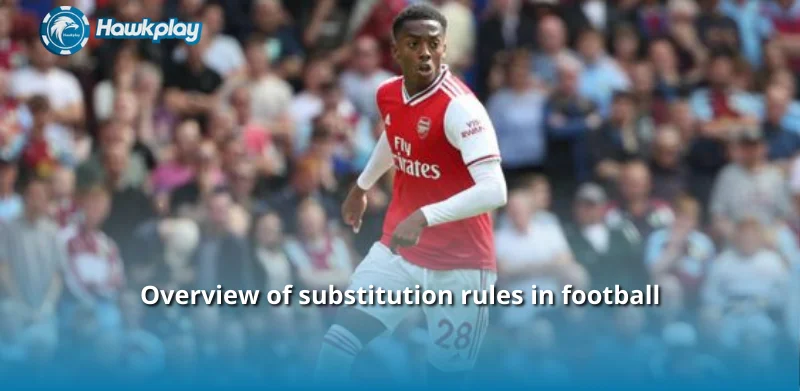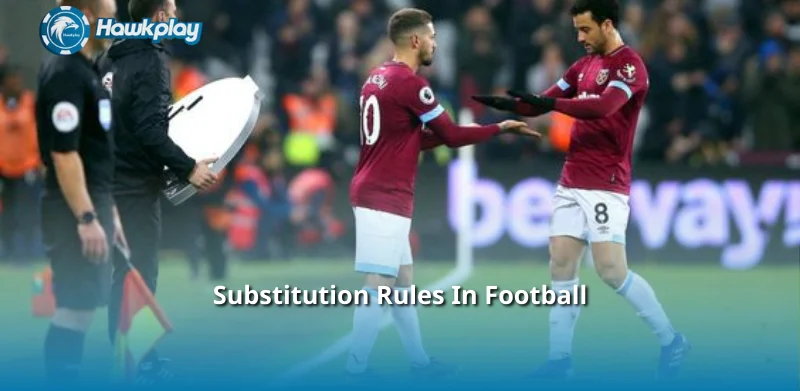Substitution Rules In Football are more than just changing players, there are many rules and details that need to be understood. From the number of substitutions allowed to when and how they are made, everything affects how the game is managed.
Overview of substitution rules in football
On September 5, 1965, football history witnessed an important event when goalkeeper Giuseppe Moschioni of the Italian team, Foggia, became the first player to be substituted according to the substitution rule in official football. This was a milestone marking the birth of the substitution rule, opening a new chapter in the way of managing the match.
This memorable event took place during the match between Foggia and Juventus. In the 61st minute of the match, Moschioni suffered a serious injury after a collision with Juventus player Traspedini. Unable to continue playing, Moschioni was replaced by reserve goalkeeper Gastone Ballarini.
This substitution rule, which has been in place since then, has changed the way teams manage their players and tactics throughout the game. This rule allows teams to replace injured or rested players, helping to ensure the health and performance of players.
The introduction of the substitution rule not only facilitates tactical flexibility but also improves fairness in matches, allowing teams to adjust their formation and tactics more effectively.

Substitution rules in football: Regulations and details you need to know
Do you understand the substitution rules in football and the specific regulations set forth by FIFA and national football organizations? In this article, Hi88 will provide a detailed look at the substitution rules including the number of players that can be substituted and important changes in recent tournaments.
About the number of players
In official tournaments organized by FIFA, regional football confederations, and national football associations, the substitution rule in football usually allows each team to make a maximum of 3 substitutions in a match. This allows teams to adjust their tactics and maintain team performance throughout the match.
The rules of the tournaments require clear regulations on the number of substitutes that can be registered during a match. Typically, the number of substitutes allowed per match ranges from 3 to a maximum of 7 players. This regulation gives the team more flexibility in replacing players and responding to situations on the field.
The rule of allowing up to 5 substitutions gives teams more flexibility in adjusting their formation and tactics during the match. This not only helps improve performance but also ensures fairness and protects the health of players in stressful competition.
Rules and regulations
When participating in football matches organized by FIFA, the implementation of the substitution law in football is strictly managed to ensure fairness and efficiency. We will help you understand how to apply the substitution law through the following regulations:
In 2007, the law of substitution in football was implemented in the following specific steps:
- Advance notice: Substitutions must be announced to the referee in advance. Substitutes may only enter the field of play once the player being substituted has left the field of play and when the referee gives permission.
- Substitution: Substitutes may only enter the field of play from outside the touchline, at the point where the touchline and the field of play intersect, when the ball is no longer in play. The substitution procedure is considered complete when the substitute has entered the field of play and the player being replaced has left the field of play.
- Participation rights: After a substitution, the substitute becomes a starting player and the substituted player no longer has the right to participate in the match. The substituted player cannot return to play in the current match.
Things you need to know about substitution rules in football

When participating in football matches, it is very important to understand and comply with the rules of substitution in football to ensure the match runs smoothly and fairly. Below are some points to note about this rule that teams and fans need to master:
Number of substitutions
According to the rules of substitution in football, each team is only allowed to make a maximum of 3 substitutions during the official match. This does not include breaks between the two halves. Although a team can make up to 3 substitutions, the substitutions cannot exceed this number during the match. This rule is to prevent teams from using substitutions to disrupt the match or slow down the opponent’s pace of play.
Substitution in extra time
If the match goes into extra time, the soccer substitution rules allow each team to make one more substitution. This is an important rule to help the team have more flexibility and save the players’ energy when the match enters the tense stage.
According to the substitution rules, substitutes may only enter the field of play when the player being replaced has completely left the field of play and has permission from the referee. Substitutions must be made at the point where the halfway line meets the touchline when the ball is out of play.
Preventing abuse: This rule also aims to limit the abuse of substitutions to delay the match or reduce pressure on the opposing team. Ensuring compliance with substitution rules helps make the match fairer and more exciting.
Common problems when substituting players according to the substitution rules in football
When making substitution rules in football, there are some common incidents that teams and referees need to pay attention to. Below are common situations and how to handle them related to the substitution rules in football:
The player enters the field by himself
One of the common incidents is when a player enters the field without permission from the referee. According to the rules of substitution in football, when this happens, the referee will take the following steps:
- Match Pause: The match will be paused immediately to deal with the problem.
- Warning the offending player: The player who has entered the field illegally will be warned and asked to leave the field.
- Further decision: The referee will restart play by awarding an indirect free kick from the position of the ball before play is stopped.
If a player replaces the goalkeeper without the referee’s permission, play continues. However, during the next stoppage (such as when the ball goes out, a foul is committed or a goal is scored), the offending player will be cautioned.
Outsider in the yard
According to the rules of substitution in football, any person who is not a registered player is not allowed to enter the field during the match. When an outsider enters the field, the referee will handle it as follows:
- Match Pause: The match will be paused to resolve the issue.
- Warning or caution violators: Outsiders entering the field will be warned or cautioned.
- Requiring Offenders to Leave the Field: Offenders will be asked to leave the field or the stands, depending on the severity of the incident.
Conclusion
Substitution Rules In Football play an important role in regulating and managing matches, providing flexibility and fairness for both teams. Understanding the rules regarding the number of substitutions, when to make substitutions and special regulations. Follow Hawkplay to see more articles here.

